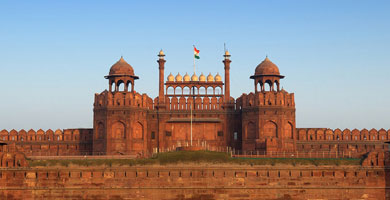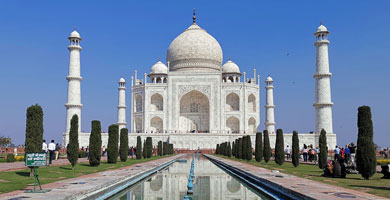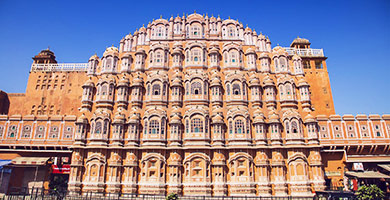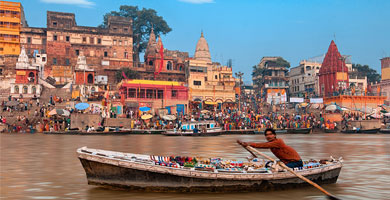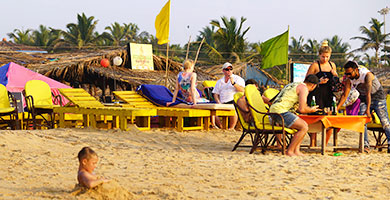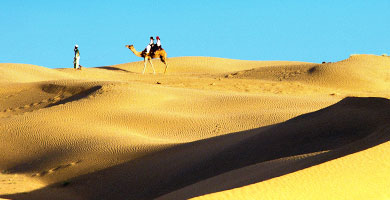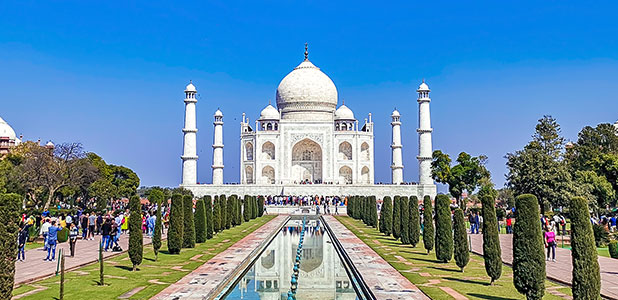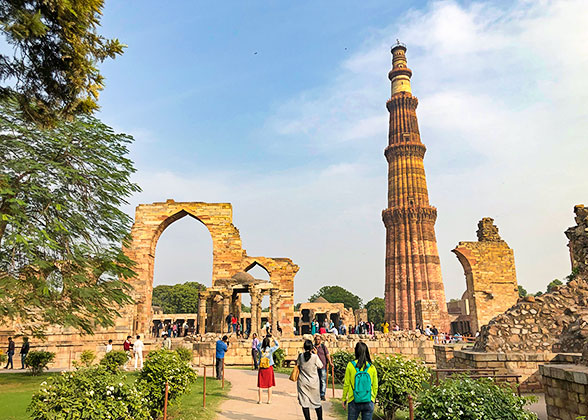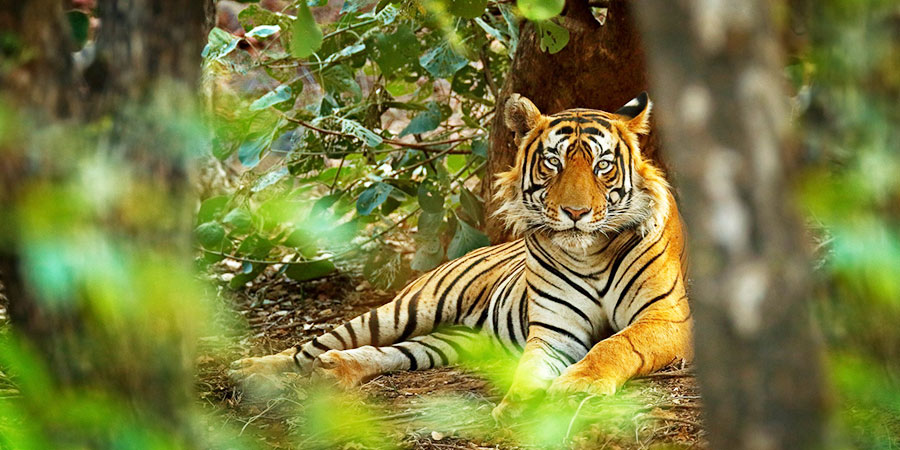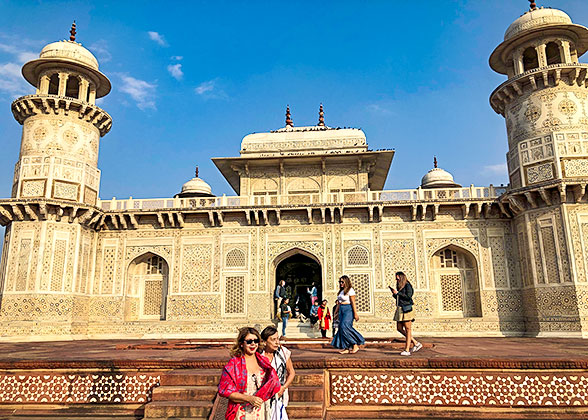India Travel Guide
Basic Facts
Name: Republic of India
Area: 3,287,263 sq km (1,269,219 sq mi)
Population: 1.428 billion (as of April 2023)
Language: Indian, English
Capital: New Delhi
Currency: Rupee
Time Zone: UTC+5:30
Religions and Beliefs: Hinduism, Islam, Sikhism, Christianity, Buddhism
Read More:
![]() 11 Facts about India
11 Facts about India ![]() 10 Facts about India for Kids
10 Facts about India for Kids
![]() 17 Interesting Facts about India
17 Interesting Facts about India ![]() Top 11 Amazing Facts about India
Top 11 Amazing Facts about India
Top Destinations
See More Popular Destinations in India:
![]() Jodhpur
Jodhpur ![]() Alappuzha
Alappuzha ![]() Kochi (Cochin)
Kochi (Cochin) ![]() Kovalam
Kovalam ![]() Trivandrum (Thiruvananthapuram)
Trivandrum (Thiruvananthapuram)
You May Like:
![]() 10 Best Tourist Places to Visit in India
10 Best Tourist Places to Visit in India
![]() Best Holiday Destination in India: Top 10
Best Holiday Destination in India: Top 10
![]() 12 Outdoor Destinations for Adventure Tourism in India
12 Outdoor Destinations for Adventure Tourism in India
![]() 10 Best Honeymoon Places in India
10 Best Honeymoon Places in India
![]() 16 Stunning Places to Visit in North India
16 Stunning Places to Visit in North India
![]() 16 Most Popular Places to Visit in South India
16 Most Popular Places to Visit in South India
Top Things to Do
Traveling in the country, do not forget to participate in some local activities to make your India vacation more colorful if have chance, such as taking a boat ride on Ganges River, trying yoga and meditation, trying a Henna Tattoo, participating in Holi Festival, tasting snacks like Roti Prata, mutton curry, pilaf, lassi...
Read More:
![]() 9 Special Things to Do in India Only
9 Special Things to Do in India Only
![]() India Night Tours – Top 8 Things to Do at Night
India Night Tours – Top 8 Things to Do at Night
How to Plan an India Tour
A lot of tourists come to the country for Taj Mahal. Actually, there are a lot of destinations worth a visit in addition to Taj Mahal. Delhi, Agra and Jaipur are all cities with abundant tourist attractions.
You May Like
Read More:
![]() How to Plan an India Trip: 6 Steps
How to Plan an India Trip: 6 Steps
![]() Travel to Golden Triangle India - Delhi, Agra & Jaipur
Travel to Golden Triangle India - Delhi, Agra & Jaipur
![]() Short Trips in India – 1 to 3 Days Budget Tours You should not Miss
Short Trips in India – 1 to 3 Days Budget Tours You should not Miss
![]() Where to Go in India – North vs. South
Where to Go in India – North vs. South
![]() North India Travel – Best Plans & Top Experiences
North India Travel – Best Plans & Top Experiences
![]() South India Travel – Best Plans & Top Experiences
South India Travel – Best Plans & Top Experiences
Best Time to Visit
From October to next March is the best time to go for the best India tours, with the average temperature at 5-15℃ (40-60℉) and not much rain. Affected by tropical monsoon climate, seasons in the country can be divided into three: winter, summer and rainy season. Winter is from November to next March. In most places, it is cool and sunny. In some northern mountain areas, it sometimes snows. Summer is from April to June, when the climate is dry and hot. The daytime temperature can reach 42℃ (108℉) and the night time temperature is 27-30℃ (80-85℉). Traveling during this time, please wear shirts, shorts and dresses. Also take sun glasses and anti-mosquito products. Rainy season is from late June to October. Remember to take rain gears when going there during this period.
Read More:
Transportation
The best choice to get in the country is to take a flight, which is the most convenient way among all. In major cities like Delhi, Jaipur, Mumbai and Kolkata, there are international airports at service (see also Indira Gandhi International Airport in Delhi). Inside the country, there are around 90 domestic airports covering most cities. Apart from arriving by plane, there are also international railways and highways connecting India and its neighboring countries like Nepal and Pakistan, but as the conditions and services are poor, it is not recommended to take international train or bus to cross the border.
To travel inside the country, in addition to taking a flight, you can also take a train or a long-distance bus. The railway network in the country is large and well developed. You can book tickets online, and in large railway stations, there are particular windows providing help for foreigners. When going somewhere that trains are not able to reach, like mountain areas, you can take a long-distance bus. It is cheap but the conditions are not so well. If you want to travel to some islands like Andaman Islands and Lakshadweep Islands, there are ships and ferries available, but only with 3 or 4 sailings every month.
Read More:
6 Steps on How to Take an Indian Train Traveling by India Taxi Everything about Air Travel in India Tuk-Tuk in India
Travel Tips
Do not use your left hand to pass things to local people because left hand is thought to be dirty in their culture. Never touch local people' head, especially the children's, since head is regarded as the most sacred part of one's body. According to Hinduism, the bull is the holiest animal, so do not hurt the bulls in the country.
In addition, be aware that Indians are not so punctual. 5 minutes might mean half an hour. What's more, if have chance, you can make a trip independently or join in escorted tours india in February or March to attend Holi Festival, which is the grandest festival celebrated by the whole country.
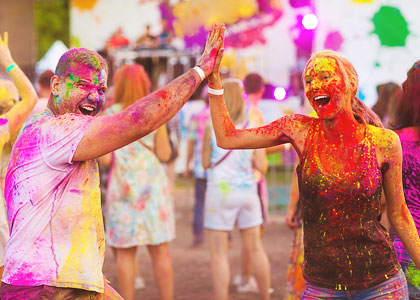
Holi Festival in India
|
Read More:
![]() Is India Safe? Read the 14 Travel Tips
Is India Safe? Read the 14 Travel Tips
![]() How much does it cost to travel in India?
How much does it cost to travel in India?
![]() Tipping in India: Who, When, and How to Tip
Tipping in India: Who, When, and How to Tip
![]() 9 Facts to Remember While Making India Packing List
9 Facts to Remember While Making India Packing List
![]() Shopping and Bargaining in India
Shopping and Bargaining in India
![]() India Travel Advice – 5 Dos and 5 Don’ts
India Travel Advice – 5 Dos and 5 Don’ts
![]() Top 10 Foods in India – What to Eat
Top 10 Foods in India – What to Eat
![]() Where to Stay in India: 5 Most Popular Accommodation Styles
Where to Stay in India: 5 Most Popular Accommodation Styles
History
The country is one of the Four Great Ancient Civilizations. 2500-1500 BC, Indus Valley Civilization was created. 4th century BC, Maurya Dynasty got the country unified, and in 3rd century BC, with the domination of Emperor Asoka, the country stepped into the most prosperous period, and Buddhism was set as the state religion. Later, Hinduism arose and developed, getting popular gradually. In 1600 AD, the country was invaded and became a colony. In 1947, it declared its independence. In 1950, Republic of India was established and now it is still a member of Commonwealth.
Geographical Features
India is the largest country in the South Asian Subcontinent. Several rivers run through the northern area, including Ganges River, the mother river of the country. Fed by the rivers and affected by tropical monsoon climate, the land is fertile for the growth of crops, plants and fruits. The perfect agricultural conditions provide the foundation for the birth of Indus Valley Civilization.

